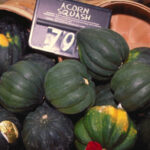Most preschoolers enjoy getting their hands dirty. They love to squish and squash in mud, finger paint, play dough, glue and any other available media. While parents want to encourage their budding artist’s talent and love of art, they also want to harness that enthusiasm into activities that won’t destroy the house. And with many parents cutting back on expenses, extra money for art supplies for their little Matisse may be in short supply. So here are some art projects you can do at home with your preschooler that won’t break the bank or trash your living room. As with all activities with preschoolers, I recommend covering the work area with newspaper and putting a smock or old shirt over the child.
First, you need a few supplies. When shopping for art supplies on a budget, the best bang for your buck is powder paint. It is extremely versatile. You can mix it to the consistency you want each time you use it – thicker for projects like finger painting or thin and runny for activities like blow painting (which I’ll describe in more detail shortly). Unlike regular liquid paints, it won’t dry out if the lid is not screwed on tightly and it’s not a disaster if the child knocks over the container. Just sweep it back in with a small dust brush. Unlike liquid paint, the dry powder paint will last forever (until water is added to it). Adding a few teaspoons to inexpensive white school glue to make colored glue for projects is a snap and much cheaper than buying colored glue from the craft store.You can also make a rainbow of colors by combining the primary three which also saves money. One caveat; When buying this type of paint, read the label carefully, as some are washable and some are not. Once you have your paint, here are some projects to try with your child:
Cut a regular kitchen sponge into two-inch squares and attach a clothespin to one end to act as a “handle”. This helps cut down on the mess. Pour a bit of paint into a paper plate. For this project the paint should be a little thicker, two-to-one paint and water. Encourage your child to try various techniques with the sponge such as dabbing, rolling, smearing and so forth. Ask him to tell you how the different techniques have different results on the paper.
Marble Painting
Marble painting is another great technique that gives a definitive look to you child’s art projects. For this project you need a container with a tight-fitting lid, like a flat Tupperware box, some paint (mixed thinly) tag board or thick paper, a few marbles (small rubber balls like the ones obtained from a gumball machine or ping pong balls work as well) and an eye dropper. Have the child insert a piece of tag board into the bottom of the container, then ask him to drop the marbles into one corner of the box. (If the child is young enough to be at risk for choking on small objects, then clearly you do this part of the activity). Then show the child how to pick up a few drops of the paint on each marble. Using multiple colors will result in a more intricate picture. Instruct the child to snap the lid on tightly (double check in, since you’ll be responsible for clean up in the event of a catastrophe). Then simply have the child shake, sway, rattle, and flip the box over and over again. My preschool students really get into this part–jumping up and down with the box and swaying. They have a tendency to turn art into a large motor activity. When the child is finished, remove the lid and retrieve the paper and set it aside on newspaper to dry. You should see a beautiful pattern on the paper.
Blow Painting
I recommend this technique for children four and over. Many two and three-year-olds have not mastered the idea of blowing into a straw verses sucking out of a straw. Even with non-toxic paint, it’s just not worth the risk, mess or possible tears. If you’re sure that your child is ready, double check by giving them a straw and a glass of water. Tell them to blow out into the water with the straw (you should see bubbles). If their skills seem sketchy, disregard this one. But if you have a child who is ready for blow painting, it’s a fun and different way of making an art project. All the child needs is the drinking straw, some thinly mixed paint (very runny) an eye dropper and a sheet of paper. Have the child put some large drops of paint in various spots on the paper. Then he simply blows the paint across the paper with the straw. The result should be something like the design shown in this picture.
Painting with Shaving Cream
This is a variation on finger painting. All you need is a $1 can of white shaving cream (the foam shaving cream, not the gel) and some powder paint. You don’t add water for this project as the shaving cream is the media, not water. Have your child squirt two large puffs of shaving cream onto thick paper or tag board. Then have him sprinkle a teaspoon or so of powder paint onto each puff. Then he just mixes it with his hands. The result is a mixed, swirled pattern that is slightly raised from the paper due to the thickness of the shaving cream. If you use blue powder paint this is a wonderful, new way of adding clouds or water waves to your child’s pictures. You can also use multiple colors and provide brushes, Q-tips, sponges and so forth, all of which will give different effects.
Apple Printing
For this project you need two apples and some powder paint mixed in a one-to-one ratio. Add some paint to a paper plate. Cut one apple in half lengthwise and cut the other apple in half crosswise. To save some clean up, you can insert plastic forks into each apple half to serve as a handle for the child. Then just encourage the child to Stamp the apples on a sheet of paper so that their patterns become apparent. Most children love seeing the unexpected design on the paper. This is a great exercise in following directions, as you are asking the child to print or stamp and not rub or smear the paint. (This will take quite a bit of practice for a young child).
All of these projects should cost less than $2 to complete. They will give your child some ideas for new painting methods, encourage fine motor skills and hopefully foster a love of art. They are all great ways to peak your child’s interest in painting while keeping him occupied on a rainy afternoon. So next time your child wants to paint, don’t just break out the usual paint brushes or finger paints. Look around your home for inexpensive objects that will promote your child’s creativity while saving you money.




